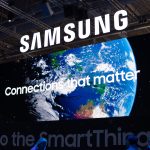NASA and SpaceX launched the Crew-6 mission from the Kennedy Space Center in Flordia earlier today after they stood down from a previous launch attempt earlier this week. The mission marks their sixth operational and seventh overall crewed launch to the ISS. SpaceX is the only company capable of launching astronauts from U.S. soil under the Commercial Crew Program. Crew-6 is flying four astronauts to the space station, with two from the U.S., one from Russia and another from the U.A.E., marking the first both the Russian and the Emirati cosmonaut and astronaut are making their way to space.
SpaceX’s Falcon 9 Flies Smoothly To Space After Earlier Scrub
Today’s launch came after teams had to stand down on Monday due to a problem with the ground systems fueling equipment for the Falcon 9. The rocket uses liquid oxygen and kerosene for liftoff, and these are ignited by a third fuel called TEA-TEB. During the previous launch attempt, controllers found that the rocket’s monitoring system could not confirm that TEA-TEB was fully loaded onto the rocket, which made them cancel the attempt less than three minutes before engine ignition for liftoff.
Teams then investigated the issue and tested the systems before today’s launch attempt to ensure the problem did not resurface. For today’s launch attempt, propellant loading into the rokcet started roughly half an hour before liftoff. At the same time, SpaceX also ran its routine tests on the rocket, including testing its engine control systems to ensure that they can maneuver the rocket as it makes its way to space.
Around the same time that propellant started to make its way into the rocket, the astronauts took their seats in the Crew Dragon spacecraft and later confirmed that they were ready to launch.
The crew access arm retracts prior to liftoff today. Image: NASA
Preparing the rocket for launch also involves flowing some super cool fuel through its engines to ensure that they are cold enough to handle full flow at the time of launch. The Falcon 9 lifted off with the Crew-6 at 12:34 am eastern time, with the first stage separating from the second stage little before three minutes had passed after liftoff.
After this, the second stage continued the journey on its own, and it took roughly four minutes for the first stage to land back on SpaceX’s drone ship. This new booster had flown for the first time, and the landing was nominal, with no issues demonstrated during its landing.
A little more than twelve minutes after launch, the Crew Dragon separated successfully from the second stage to continue its journey to the space station. The occasion marked the fourth year annniversy of the NASA and SpaceX Demo-1 mission which flew an uncrewed Crew Dragon to the ISS as part of a test flight.
The Crew-6 will make a roughly one day journey to the ISS, and they are currently scheduled to dock to the station at 1:17 am eastern time tomorrow. They are flying several unique payloads with them, such as those researching materials science and biology.
The post SpaceX Celebrates Fourth Anniversary Of Crew Capsule Launch By Launching More Astronauts by Ramish Zafar appeared first on Wccftech.







